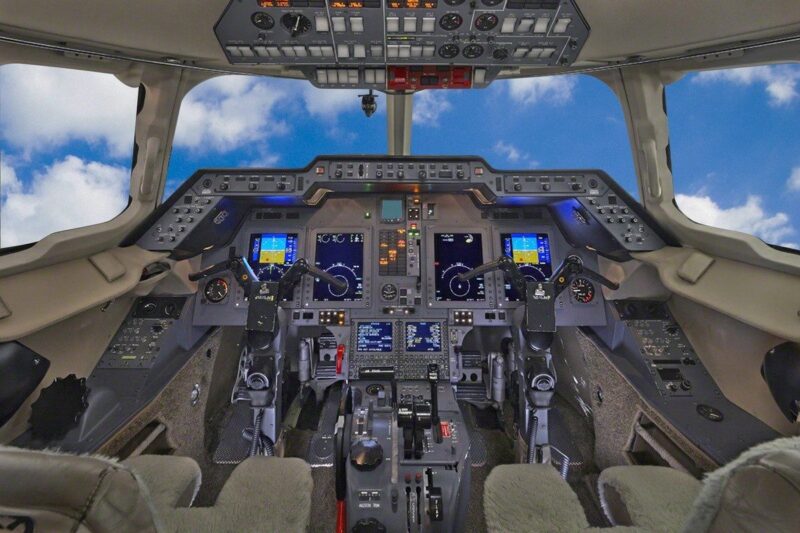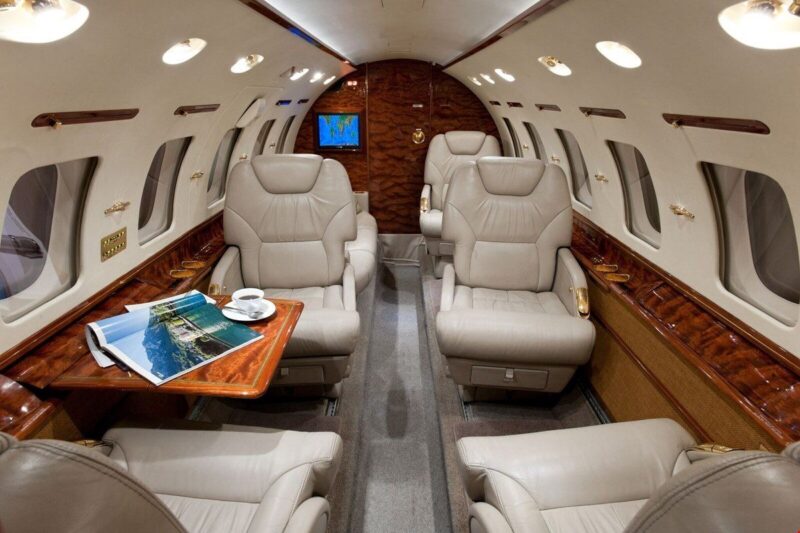British Aerospace 125 The Origins and Evolution
The British Aerospace 125 stands as a testament to the evolution of mid-size business jets. Originally conceived by de Havilland as the DH.125 Jet Dragon, it later took to the skies as the Hawker Siddeley HS.125. This designation remained until 1977, post which newer models were known as the Hawker 800. Remarkably, over 60% of the aircraft’s sales were to North American customers. The Royal Air Force also employed it as a navigation trainer, named the Hawker Siddeley Dominie T1. Additionally, the United States Air Force recognized its potential, using it as a calibration aircraft under the C-29 designation.
British Aerospace 125 Design and Development
In 1961, de Havilland embarked on the journey to create a business jet that would succeed the piston-engined de Havilland Dove. The DH.125 Jet Dragon was envisioned to have a range of at least 1,000 miles, powered by the Bristol Siddeley Viper turbojet. The design featured a twin-engine setup on the rear fuselage. By 13 August 1962, the first prototype was airborne, with production models soon to follow, boasting improvements and refinements.
Production Milestones
The aircraft underwent numerous designation changes. Initially, the legacy brand “DH” was used, but post full production, it was renamed “HS.125”. The name transitioned to BAe 125 in 1977 when Hawker Siddeley merged with the British Aircraft Corporation. By the 1990s, the aircraft was popularly referred to as the Hawker 1000. Interestingly, while the prototypes were assembled at de Havilland’s Hatfield site, all production models were crafted at the Broughton factory near Chester. Production, however, ceased in 2013 due to Hawker Beechcraft’s bankruptcy.
Design Highlights
The DH.125 boasts a low-winged monoplane design, powered by two engines positioned on the rear fuselage. Its slightly swept wing, derived from the larger de Havilland Comet, is equipped with large slotted flaps and airbrakes, making it suitable for small airfields. The aircraft’s fuselage is designed for comfort, accommodating two pilots and six passengers. The cabin offers 5 feet 9 inches of headroom, and a 3 feet wide door facilitates the loading of bulky equipment.

British Aerospace 125 Operational History
As one of the pioneering executive jets, the British Aerospace 125 saw a diverse range of operators, from governments and militaries to private entities. A significant portion of its clientele was based in North America. The Royal Air Force was a notable operator, using 20 aircraft as navigation trainers. The aircraft also served in various roles during the War in Afghanistan.
British Aerospace 125 Variants and Special Models
Over the years, the British Aerospace 125 saw several variants, each improving upon the last. From the Series 1, powered by Viper 20 or 520 engines, to the Series 1000 with its intercontinental capabilities, the aircraft adapted to the changing demands of the aviation industry. Special models like the HS.125 Protector, a maritime patrol aircraft, and the U-125, a flight inspection aircraft for Japan, showcased the aircraft’s versatility.
British Aerospace 125 Enduring Popularity in the Modern Era
Even as newer and more technologically advanced aircraft emerge, the British Aerospace 125 continues to hold a special place in the hearts of aviation enthusiasts and professionals alike. Its robust design, combined with its proven reliability, has ensured that many of these aircraft remain operational today. Many have been refurbished and upgraded, equipped with modern avionics and interiors, reflecting the contemporary demands of private jet travelers.
Furthermore, the British Aerospace 125’s influence can be seen in the design philosophies of subsequent business jets. Its emphasis on passenger comfort, operational efficiency, and adaptability has become a standard in the industry. Many operators, recognizing the aircraft’s enduring value, have chosen to invest in maintaining and upgrading their fleets rather than transitioning to newer models. This commitment speaks volumes about the aircraft’s lasting impact and the trust it has garnered over the decades.
British Aerospace 125: A Symbol of Aviation’s Golden Era
For many, the British Aerospace 125 isn’t just an aircraft; it’s a symbol of an era when aviation witnessed rapid advancements and growth. Its legacy is a testament to the visionaries who designed it and the countless individuals who have flown and maintained it over the years.

British Aerospace 125 Legacy and Impact
The British Aerospace 125’s legacy is undeniable. As the world’s longest in-production business jet, it set standards in the industry. Its design, versatility, and adaptability made it a favorite among various sectors, ensuring its place in aviation history.
For many, the British Aerospace 125 isn’t just an aircraft; it’s a symbol of an era when aviation witnessed rapid advancements and growth. Its legacy is a testament to the visionaries who designed it, the countless individuals who have flown it, and the dedicated maintenance teams that have ensured its operational excellence over the years.